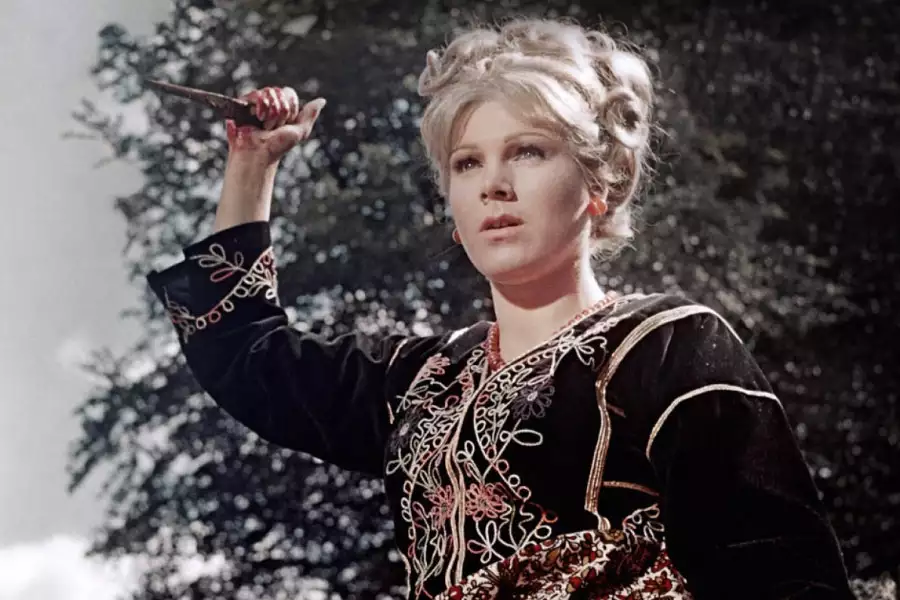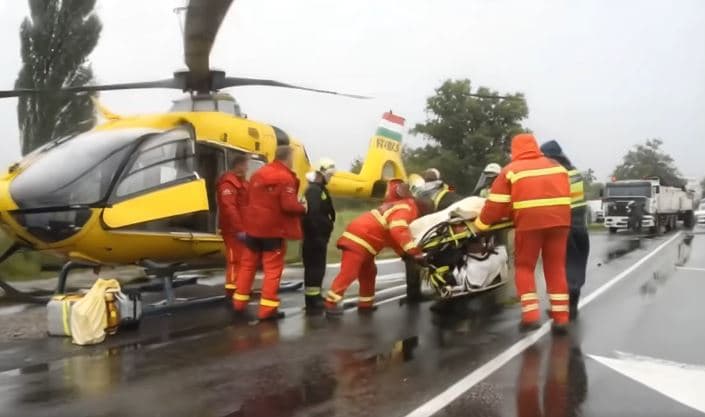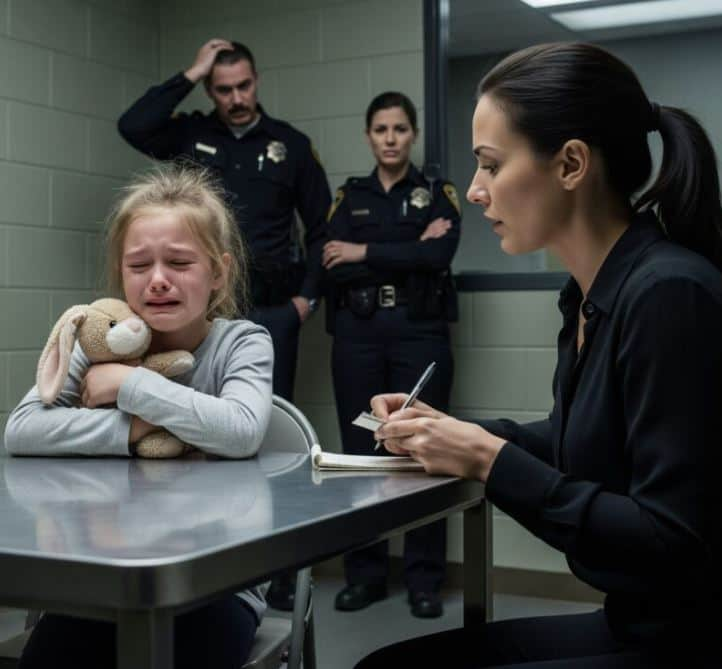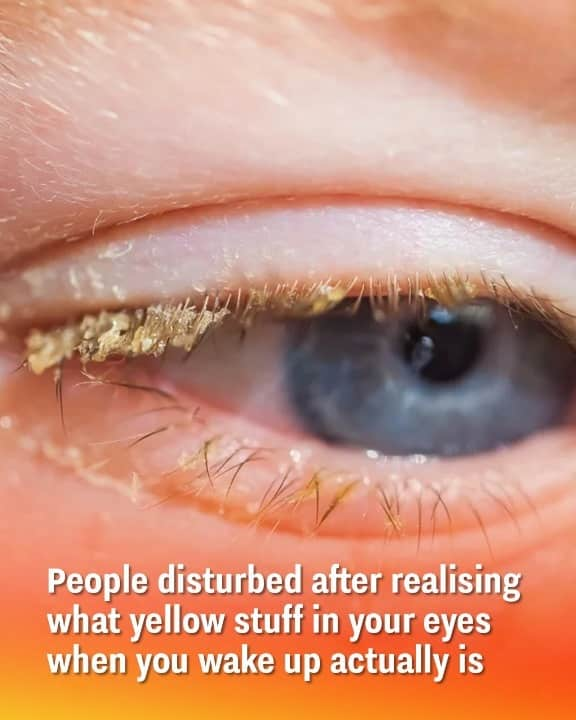In the kaleidoscopic world of 1960s cinema, where horror films bled into pop culture and starlets seemed to shimmer and fade overnight, one name briefly burned with an almost mythic glow: Susan Denberg. In 1967, she appeared in a Hammer Horror production that still lives vividly in the memories of fans, only to vanish from the screen soon after. For decades, whispers of scandal, silence, and personal struggles trailed her legacy. Who was this enigmatic blonde who seemed to embody the very spirit of swinging-sixties glamour and gothic dread, only to disappear just as quickly as she arrived?

Born Dietlinde Zechner in 1944 in Bad Polzin, Germany (then part of Prussia, now Poland), she emigrated to Austria as a child. Like many young women of her generation, she found early work in modeling, where her statuesque figure, platinum hair, and striking blue eyes made her an instant standout. By the mid-1960s, she had reinvented herself as Susan Denberg, pursuing opportunities far from her European beginnings.
Her first burst of fame came not from acting but from the pages of glossy magazines. In August 1966, she was featured as Playboy’s Playmate of the Month. The spread introduced her to American audiences, painting her as the quintessential blonde bombshell of the era — alluring, slightly exotic, and brimming with possibility. From there, Hollywood beckoned.

Denberg’s most notable screen appearance came swiftly. In 1967, Hammer Films, then at the height of its horror success, cast her in Frankenstein Created Woman. Directed by Terence Fisher, the film paired gothic horror with themes of love, revenge, and metaphysical mystery. Denberg played Christina, the disfigured daughter of an innkeeper who, after her tragic death, is resurrected by Peter Cushing’s Baron Frankenstein in a new, flawless body. As Christina, Denberg balanced pathos with eerie allure, embodying Hammer’s blend of beauty and menace.
The role was both bold and tragic. Denberg was not just another damsel in distress; her Christina carried the weight of longing, despair, and vengeance. In one of Hammer’s more philosophically inclined scripts, her performance elevated the film beyond camp. For many horror fans, her image in that role — golden-haired, pale-skinned, both victim and avenger — remains iconic.

Yet just as Denberg’s career seemed poised to take off, she disappeared from mainstream cinema. There were rumors of small television appearances, including an episode of Star Trek (“Mudd’s Women,” 1966), but after
Frankenstein Created Woman, no major roles followed. It was as if the blonde who had lit up Hammer Horror simply evaporated into the ether.
What happened next became the stuff of tabloid speculation. Some reports suggested that she had fallen into personal difficulties in Los Angeles, including struggles with substance abuse and mental health. Others claimed she returned quietly to Europe, retreating from fame after its brief, searing burn. For years, conflicting accounts circulated, some insisting she had died young, others that she lived reclusively in Austria. The mystery only deepened her legend.

Part of Denberg’s allure lies in this absence. Unlike her contemporaries who built long résumés of films and television roles, she left behind only fragments — a handful of performances, photographs, and rumors. That scarcity has turned her into a cult figure, her name invoked with the same fascination reserved for stars who vanish at their peak.
What we do know is that Denberg’s life after Hollywood was turbulent. By the 1970s, she had largely retreated from the spotlight, but traces of her surfaced in European gossip columns. Tales of heartbreak, scandal, and personal reinvention circulated but were rarely confirmed. In some ways, the absence of certainty has made her story even more compelling — a real-life mystery that mirrors the gothic fantasies she once inhabited on screen.

For fans of Hammer Horror, Susan Denberg remains frozen in time, forever the tragic Christina. That image — a young woman reborn by mad science, her beauty both a gift and a curse — resonates beyond its pulp origins. In the role, Denberg projected an emotional vulnerability that made Christina unforgettable, a performance that outshone her limited dialogue. It was the kind of part that might have launched a longer career, had circumstances been different.

Today, Denberg’s brief moment in the spotlight is celebrated not only by horror aficionados but also by cultural historians who see in her story the complexities of 1960s celebrity. She was part of a generation of women whose careers were both made and constrained by their beauty, caught in an industry that valued them as icons more than as artists. Her vanishing act — whether by choice or by circumstance — only underscores how fragile fame could be.
Who was Susan Denberg? A model, a Playboy pin-up, a Hammer starlet, a rumored cautionary tale — but also a reminder that some stories resist neat conclusions. Her life, like the films she graced, is tinged with mystery and melancholy. She may not have built the filmography of a Monroe or a Bardot, but for those who glimpse her in
Frankenstein Created Woman, she is unforgettable: a ghostly vision of beauty, loss, and cinematic immortality.
Her story is stranger than fiction because it lingers unfinished, a question mark wrapped in velvet shadows. Denberg’s name still prompts curiosity, still conjures the image of a blonde beauty whose star blazed briefly and vanished. And perhaps that is why, more than fifty years later, we still ask the same question: what really became of Susan Denberg?

O’Hara’s Shireen was far more than a beautiful accessory to the male hero’s exploits. She was central to the story, a woman of agency and intellect navigating the treacherous waters of power, politics, and personal desire. Her flame-red hair, piercing green eyes, and unmistakable Irish determination made her unforgettable on screen, while her performance imbued Shireen with a regal strength rarely seen in fantasy heroines of the 1940s. Opposite Fairbanks Jr.’s roguish Sinbad, O’Hara stood toe-to-toe—not as a passive prize to be won, but as a calculating equal, a woman whose choices and ambitions shaped the very course of the narrative.
In an era when female characters in adventure films were often confined to roles of damsels in distress, Shireen was strikingly different. O’Hara’s portrayal gave the character intelligence, wit, and layers of subtle power. She manipulated alliances with skill, maneuvered through betrayals with resilience, and maintained an aura of grace that masked her shrewdness. At a time when Hollywood frequently reduced women to decoration, Shireen stood out as a fully realized figure, both glamorous and formidable. The chemistry between O’Hara and Fairbanks Jr. heightened the film’s romantic tension, but it was never one-sided—she matched him quip for quip, glance for glance, with regal poise and palpable strength.

Although the film leaned heavily on high adventure and lavish spectacle, it was O’Hara who gave it heart. The ornate sets, shimmering costumes, and sweeping battles provided visual grandeur, but it was Shireen’s sharp intelligence and commanding presence that gave the story substance. O’Hara’s layered performance elevated Sinbad the Sailor from a simple fantasy adventure to something more enduring: a tale where female strength was as essential as male bravado.
In the broader context of Hollywood, O’Hara’s role in Sinbad the Sailor was part of her ongoing mission to redefine how women were portrayed on screen. Her career was filled with roles that showcased women as resilient, outspoken, and deeply human—far from the fragile archetypes so common in the Golden Age of cinema. She famously clashed with directors and producers when they tried to limit her characters, insisting instead on depth and dignity. This fierce independence mirrored the qualities she gave to Shireen, making the role not just memorable but emblematic of her entire body of work.

Born Dietlinde Zechner in 1944 in Bad Polzin, Germany (then part of Prussia, now Poland), she emigrated to Austria as a child. Like many young women of her generation, she found early work in modeling, where her statuesque figure, platinum hair, and striking blue eyes made her an instant standout. By the mid-1960s, she had reinvented herself as Susan Denberg, pursuing opportunities far from her European beginnings.
Her first burst of fame came not from acting but from the pages of glossy magazines. In August 1966, she was featured as Playboy’s Playmate of the Month. The spread introduced her to American audiences, painting her as the quintessential blonde bombshell of the era — alluring, slightly exotic, and brimming with possibility. From there, Hollywood beckoned.

Denberg’s most notable screen appearance came swiftly. In 1967, Hammer Films, then at the height of its horror success, cast her in Frankenstein Created Woman. Directed by Terence Fisher, the film paired gothic horror with themes of love, revenge, and metaphysical mystery. Denberg played Christina, the disfigured daughter of an innkeeper who, after her tragic death, is resurrected by Peter Cushing’s Baron Frankenstein in a new, flawless body. As Christina, Denberg balanced pathos with eerie allure, embodying Hammer’s blend of beauty and menace.
The role was both bold and tragic. Denberg was not just another damsel in distress; her Christina carried the weight of longing, despair, and vengeance. In one of Hammer’s more philosophically inclined scripts, her performance elevated the film beyond camp. For many horror fans, her image in that role — golden-haired, pale-skinned, both victim and avenger — remains iconic.

Yet just as Denberg’s career seemed poised to take off, she disappeared from mainstream cinema. There were rumors of small television appearances, including an episode of Star Trek (“Mudd’s Women,” 1966), but after
Frankenstein Created Woman, no major roles followed. It was as if the blonde who had lit up Hammer Horror simply evaporated into the ether.
What happened next became the stuff of tabloid speculation. Some reports suggested that she had fallen into personal difficulties in Los Angeles, including struggles with substance abuse and mental health. Others claimed she returned quietly to Europe, retreating from fame after its brief, searing burn. For years, conflicting accounts circulated, some insisting she had died young, others that she lived reclusively in Austria. The mystery only deepened her legend.

Part of Denberg’s allure lies in this absence. Unlike her contemporaries who built long résumés of films and television roles, she left behind only fragments — a handful of performances, photographs, and rumors. That scarcity has turned her into a cult figure, her name invoked with the same fascination reserved for stars who vanish at their peak.
What we do know is that Denberg’s life after Hollywood was turbulent. By the 1970s, she had largely retreated from the spotlight, but traces of her surfaced in European gossip columns. Tales of heartbreak, scandal, and personal reinvention circulated but were rarely confirmed. In some ways, the absence of certainty has made her story even more compelling — a real-life mystery that mirrors the gothic fantasies she once inhabited on screen.

For fans of Hammer Horror, Susan Denberg remains frozen in time, forever the tragic Christina. That image — a young woman reborn by mad science, her beauty both a gift and a curse — resonates beyond its pulp origins. In the role, Denberg projected an emotional vulnerability that made Christina unforgettable, a performance that outshone her limited dialogue. It was the kind of part that might have launched a longer career, had circumstances been different.

Today, Denberg’s brief moment in the spotlight is celebrated not only by horror aficionados but also by cultural historians who see in her story the complexities of 1960s celebrity. She was part of a generation of women whose careers were both made and constrained by their beauty, caught in an industry that valued them as icons more than as artists. Her vanishing act — whether by choice or by circumstance — only underscores how fragile fame could be.
Who was Susan Denberg? A model, a Playboy pin-up, a Hammer starlet, a rumored cautionary tale — but also a reminder that some stories resist neat conclusions. Her life, like the films she graced, is tinged with mystery and melancholy. She may not have built the filmography of a Monroe or a Bardot, but for those who glimpse her in
Frankenstein Created Woman, she is unforgettable: a ghostly vision of beauty, loss, and cinematic immortality.
Her story is stranger than fiction because it lingers unfinished, a question mark wrapped in velvet shadows. Denberg’s name still prompts curiosity, still conjures the image of a blonde beauty whose star blazed briefly and vanished. And perhaps that is why, more than fifty years later, we still ask the same question: what really became of Susan Denberg?

O’Hara’s Shireen was far more than a beautiful accessory to the male hero’s exploits. She was central to the story, a woman of agency and intellect navigating the treacherous waters of power, politics, and personal desire. Her flame-red hair, piercing green eyes, and unmistakable Irish determination made her unforgettable on screen, while her performance imbued Shireen with a regal strength rarely seen in fantasy heroines of the 1940s. Opposite Fairbanks Jr.’s roguish Sinbad, O’Hara stood toe-to-toe—not as a passive prize to be won, but as a calculating equal, a woman whose choices and ambitions shaped the very course of the narrative.
In an era when female characters in adventure films were often confined to roles of damsels in distress, Shireen was strikingly different. O’Hara’s portrayal gave the character intelligence, wit, and layers of subtle power. She manipulated alliances with skill, maneuvered through betrayals with resilience, and maintained an aura of grace that masked her shrewdness. At a time when Hollywood frequently reduced women to decoration, Shireen stood out as a fully realized figure, both glamorous and formidable. The chemistry between O’Hara and Fairbanks Jr. heightened the film’s romantic tension, but it was never one-sided—she matched him quip for quip, glance for glance, with regal poise and palpable strength.

Although the film leaned heavily on high adventure and lavish spectacle, it was O’Hara who gave it heart. The ornate sets, shimmering costumes, and sweeping battles provided visual grandeur, but it was Shireen’s sharp intelligence and commanding presence that gave the story substance. O’Hara’s layered performance elevated Sinbad the Sailor from a simple fantasy adventure to something more enduring: a tale where female strength was as essential as male bravado.
In the broader context of Hollywood, O’Hara’s role in Sinbad the Sailor was part of her ongoing mission to redefine how women were portrayed on screen. Her career was filled with roles that showcased women as resilient, outspoken, and deeply human—far from the fragile archetypes so common in the Golden Age of cinema. She famously clashed with directors and producers when they tried to limit her characters, insisting instead on depth and dignity. This fierce independence mirrored the qualities she gave to Shireen, making the role not just memorable but emblematic of her entire body of work.

Olivia stepped onto the training grounds clad in a faded, threadbare shirt that had clearly endured countless grueling days under the relentless sun and cold rain of the barracks.
A battered, sagging backpack hung loosely from one shoulder, while her hair was tied back low, falling gently against the nape of her neck.
Every movement she made radiated a profound weariness, as if carrying the weight of invisible burdens, and a quiet sorrow that mirrored the hardships she had already faced.
She resembled more a lost nurse abandoned by fate than a determined soldier ready to prove her mettle.
Among the fresh recruits, her odd appearance was unmistakable, drawing curious, skeptical, and dismissive glances from the others.
Officers and fellow soldiers exchanged sneering, mocking looks.
A young man named Derek burst into loud laughter upon seeing her. “What is this? Looks like they’re recruiting stagehands now!” he jeered, sparking a chorus of laughter around him.
Every slight motion she made was scrutinized with suspicion, as if everyone was waiting to see how long she could endure the harsh training. Yet Olivia remained composed, unaffected by the taunts, moving forward steadily but silently.
In the mess hall, Derek pushed the limits even further.
When Olivia queued for food, he slammed his tray down loudly beside her and shouted, “Hey, you’re in the wrong line — this isn’t a charity kitchen!”
Then, he shoved his tray with such force that mashed potatoes splattered across her shirt, leaving a conspicuous stain.
The hall erupted with boisterous laughter, many shaking their heads in disbelief at the cruelty of the act.
Olivia closed her eyes briefly, drew a slow, steady breath, and calmly wiped the mess away, continuing to eat as if nothing had happened.
During warm-ups, Lance, a robust and aggressive recruit, seized the opportunity to intimidate.
As she moved cautiously, he suddenly charged his shoulder into her, pushing her back into the muddy corner of the field.
“Careful, Mitch! Planning to mop the floor with yourself?” he sneered, prompting another round of loud laughter.
Olivia brushed off the mud from her clothes and resumed the exercise without a word of protest.

Later, during an orientation drill, Kyle, one of the group’s most derisive figures, grabbed her map and tore it roughly in half, a cruel grin spreading across his face.
“Let’s see how you manage now!” he taunted, scattering the torn pieces on the ground. But Olivia refused to falter; she pressed forward, her eyes blazing with resolve.
Yet the turning point arrived during the combat simulation. Lance suddenly grabbed her collar and slammed her against the wall.
The fabric ripped sharply, revealing a dark, ancient tattoo etched on her shoulder blade — bold and mysterious.
The room plunged into stunned silence.
The colonel hurried over, his face drained of color, eyes locking onto the intricate design: an eagle with outstretched wings, encircled by cryptic symbols known only to a select few in uniform.
He recognized the emblem instantly. It belonged to a secret brigade — an elite unit tasked with covert missions beyond national borders, operations whispered about in hushed tones but rarely confirmed.
Olivia was no ordinary recruit. She was undercover, sent to gauge the soldiers’ endurance under humiliation and pressure.
The colonel, trembling yet filled with reverence, straightened himself.
His secret had been revealed, along with the truth about the woman before them: not a lost soul, but a warrior forged in shadows, prepared to sacrifice everything for her country.
The audience was speechless as they saw in the eyes of the girl they had scorned a new fierceness and inner strength.
The walls of mockery and disdain began to tremble, for they no longer saw a weak novice but a hidden power — a secret weapon that nothing could shatter.
In that silence, everyone understood that a new era had begun. An era in which the strength lurking beneath the surface emerged, transcending appearances and prejudice.
Olivia hadn’t just survived the trials — she had conquered them, proving that true power lies not in outward appearances but deep within the soul.
That day, no one dared mock her again.
Those who tried saw reflected in her gaze respect and fear — the respect owed to a true warrior, one whose trials had not broken her but made her stronger.

Accidents, congestion, extraordinary traffic events – Wednesday, May 14, 2025, 06:37
In the morning hours, several road accidents and traffic obstacles are making traffic difficult across the country. You can receive continuous information about events affecting the safety and continuity of road traffic by enabling Push notifications on the settings page. The service can be turned off at any time.
❗ Major accidents and congestion:
🔴 M0 motorway eastern sector, Vecsés area – towards M5Two cars and a van collided at kilometer 34.
The scene has been cleared, all lanes are now passable, however, the 10 km congestion is only slowly dissipating. Please drive with extra caution on this section!
🔴 M5 motorway, towards Röszke — Kecskemét bypassA car drove into the fixed diversion at km 85. Traffic is currently only allowed to travel on the emergency lane, which has caused a 3-kilometer traffic jam.
🔨 M3 motorway, towards Budapest — Mogyoród areaPavement renovation is underway at km 22, behind which traffic slows down and may temporarily become congested.
⚠️ Main road 2, Dunakeszi crossing sectionSeveral vehicles collided at km 18. Only half of the roadway is passable, vehicles are congested.
🟠 Main road 7, Székesfehérvár bypassA vehicle with a technical defect is obstructing traffic at km 74, towards Letenye. The outer lane has been closed, traffic is moving in the inner lane.
🛑 Highway 47, near Berettyóújfalu Due to an accident, half of the road is closed at km 34. Traffic is being controlled by traffic signalmen.

Renovation – M8 motorway, Dunaújváros – Pentele Bridge
Restrictions have been lifted on the Pentele Bridge, which was closed recently.
Between km 79 and 81, one lane can be used in both directions again. During the works, pedestrian and bicycle crossings are also possible.
🌍 International transport – Situation of border crossings:
The Slovak-Hungarian border crossings in the Bratislava, Nagyszombat and Nitra regions are currently closed to vehicles weighing more than 3.5 tons.
Even-toed ungulates can only be crossed at the Parassapuszta border crossing. At the major border crossings (Rajka, Vámosszabadi, Komárom, Esztergom, Parassapuszta) they can be crossed after a disinfection gate check.
📌 Further details and regulations are available:
▶ Foot and mouth disease – information and restrictions (MKFE)
▶ Border crossing information – Official Police website
🚗 Summary:
Avoid the affected sections of the M0, M5 and M3 motorways if possible.
Choose alternative routes or leave earlier.
Follow the road information services and enable notifications to be the first to know about changes!
🔄 Follow the news for updates and take care of yourself on the roads!

In September 2025, a fire broke out inside the Singhadurbar complex in Kathmandu, Nepal. This historic building houses several ministries and also the national data center, which is a crucial hub for government digital infrastructure. While early assessments suggest that the data center itself was not directly damaged, the incident has raised serious concerns about the safety and resilience of critical state systems.

The Incident and Immediate Impact
Reports from officials and local media confirmed that the fire spread through parts of the Singhadurbar compound. Emergency response teams were deployed to contain the flames and protect sensitive facilities. Fortunately, the Singhadurbar Data Center was reportedly unharmed, meaning that key digital records remained intact.
However, the fire still caused disruption. Several ministries and offices located in the complex experienced damage to documents, archives, and workspaces. For a short time, questions arose about the continuity of public services and whether important data might have been lost. Even though officials quickly reassured citizens that core systems were safe, the event exposed just how fragile centralized government infrastructure can be when disaster strikes.

Why the Fire Matters
The significance of the Singhadurbar fire goes beyond immediate material damage. It is a reminder of the risks faced by governments that store vast amounts of data in a single, centralized facility.
First, there is the issue of vulnerability. Housing national records and databases in one building creates a single point of failure. If that site were to be destroyed or severely compromised, the consequences for public administration, law enforcement, and civil rights could be devastating.
Second, there is the risk of losing historical and legal documents. Although digital backups may exist, physical archives often contain irreplaceable records that cannot be reconstructed once lost. A fire of this scale emphasizes the need for dual preservation—both digital and physical.
Third, incidents like this can affect public trust. Citizens expect their governments to safeguard sensitive information, from property records to legal documentation. When disasters threaten these systems, even if the outcome is minimal, people naturally begin to question whether enough precautions are in place.

Lessons for Digital Resilience
The Singhadurbar fire offers several important lessons for building resilient digital infrastructure. One is the importance of redundancy. Critical data should not only be stored in one location but backed up in geographically separate centers to ensure continuity in case of a local disaster.
Another lesson is the role of prevention systems. Data centers need advanced fire detection and suppression technologies, combined with strict safety protocols, to reduce risk. Infrastructure should be segmented so that fire in one section cannot easily spread to areas containing critical systems.
Governments can also benefit from disaster recovery planning. Regular drills, system audits, and backup restoration exercises help ensure preparedness. Beyond that, integrating hybrid solutions—combining on-site servers with secure cloud storage—adds another layer of resilience.
Finally, communication is essential. In the aftermath of the Singhadurbar fire, officials quickly clarified that no damage had been done to the data center. This timely communication helped prevent misinformation and reassured the public. Transparency during such events builds trust and demonstrates accountability.

Moving Forward
As Nepal begins to recover from this event, the government faces the task of strengthening its infrastructure. That means assessing the full extent of the damage, repairing affected offices, and modernizing fire safety systems within the Singhadurbar complex. It also means reviewing data protection policies, updating legal frameworks, and setting new standards for how sensitive information is stored and secured.
The fire will likely spark broader conversations about how countries safeguard their national data assets. With the increasing digitalization of governance, incidents like this should be treated not just as isolated accidents but as reminders of the critical importance of resilience, redundancy, and foresight.
Conclusion
The Singhadurbar Data Center fire may not have caused the catastrophic loss many feared, but it underscores how vulnerable centralized government systems can be. Protecting data is not only about cybersecurity but also about physical safety. Governments worldwide can learn from this incident by adopting stronger disaster-preparedness strategies to ensure that public trust and essential services remain secure, even in the face of unexpected crises.

This morning, something happened in my kitchen that I never imagined I’d experience — and it’s been replaying in my mind ever since. The day began like any other.
I was getting ready to make breakfast and turned on the air fryer, just like I’ve done countless times before.
It’s a staple in our home, practically part of the daily routine, so I didn’t think twice about it.
But only a few minutes later, I noticed a strange odor in the air. Not quite smoke — more like an acrid, greasy burning smell that immediately made me uneasy.
I walked over to the counter, and what I saw sent chills through me: flames inside the appliance. Real, visible fire.
It wasn’t just steam or overheating — the unit was actually burning. For a moment, I froze, but instinct kicked in.
I yanked the plug from the socket and grabbed a damp kitchen towel to smother the flames.
Thankfully, it worked, and the fire didn’t spread. But the thought of what might’ve happened if I had stepped out for even two minutes was terrifying. What if someone had been asleep? Or worse, what if no one was home?
Once my hands stopped shaking and my breathing calmed, I started investigating the cause. The appliance itself wasn’t faulty. No electrical failure, no short circuit.
The reason turned out to be disturbingly simple: built-up grease and crumbs.
There were layers of old oil and charred food bits collected near the heating element and at the bottom of the tray. The kind of residue I’d noticed before, but kept putting off cleaning.
You know how we always say, “I’ll wipe it later,” or “It can handle one more use”? Well, that “one more use” nearly turned into disaster.
It really made me stop and think. Technology can be smart, efficient, and modern — but at the end of the day, it still depends on human care and responsibility.

And it’s often the most obvious things we overlook: the routine maintenance, the small cleaning tasks, the momentary supervision.
Those tiny lapses — out of laziness, rush, or simply distraction — can lead to something truly dangerous. If we’re not present, if we’re not paying attention, it can already be too late.
What made it even more unsettling was the memory of using parchment paper in the air fryer just a few days earlier.
I had cut a small sheet myself, and it probably wasn’t shaped quite right.
That may have interfered with the airflow inside the unit, caused heat to build up in the lower section, and pushed temperatures past the ignition point.
Afterwards, I did some reading and found that parchment paper — especially if not properly secured or placed too close to the heating coil — can actually catch fire in air fryers.
Since that incident, I’ve completely reevaluated how I use my kitchen appliances. I now take extra care not only with what I cook, but with how I clean and store the equipment.
I make sure everything is spotless after each use, I stick to accessories that are specifically recommended by the manufacturer, and I never walk away while the device is running — even if it’s just for a minute.
I’ve also made it a rule to let the air fryer cool down entirely before tucking it away. In the past, I sometimes put it away while still warm, just to clear the counter — but now I know that’s not safe either.
This small incident — which, thankfully, didn’t end in tragedy — was a wake-up call.
A reminder not to take anything for granted. To stay mindful, attentive, and to never underestimate the warning signs that something isn’t right.
It might’ve just been a little leftover grease. But now I know — sometimes that’s all it takes for a fire to ignite.
And in some cases, the difference between a close call and a catastrophe comes down to one damp cloth and a moment of alertness.

** Effective and natural solution to combat ants: disappear in just 10 seconds **
Discover a safe, fast and natural method to remove ants from the garden. This solution acts immediately, and the ants disperse in just a few seconds. Everything without toxic substances and without affecting the plants. You can find the full details below.
** Ants — small, but extremely harmful in the garden **
Although they may seem harmless, ants can quickly become a serious problem, especially in vegetable gardens.
They dig the tunnels in the soil, disturbing the roots of the plants, and often collaborate with other pests, such as aphids, protecting them and contributing to their multiplication. If not stopped in time, they can compromise the entire harvest.
** Natural and guaranteed method to eliminate ants **
The proposed solution does not involve expensive chemicals or insecticides, but uses a single natural ingredient, easy to find and completely safe for humans, animals and plants: ** corn flour **.
The ants are attracted to it, collect it and transport it into their nest. Once ingested, corn flour affects their digestive system, gradually leading to the disappearance of the whole colony, without the need for invasive interventions.
** Step by step instructions for application: **
1. ** Identifies the affected areas **: Observe where most ants appear — around the plants, on the alleys, near pots or edges of flower beds.
2. ** Sprinkle corn flour ** in generous quantity on these areas and around the attacked plants.
3. ** Repeat the treatment ** every two to three days, until the activity of ants completely disappears.
4. There is no need to use or mix the flour with other substances — the application is made dry.
** Additional natural ingredients with repellent effect on ants **

In addition to cornstarch, there are other natural products that can be used to repel or eliminate ants and other pests, such as:
* **Cinnamon** – its intense smell is repellent to ants.
* **Turmeric** – has a repellent effect and is completely safe for soil and plants.
* **Baking soda** – effective in combination with sugar, attracts and eliminates ants.
* **Yeast** – combined with sugar and water, can form an effective trap.
These ingredients not only keep ants away, but also prevent the appearance of aphids, which can quickly destroy fragile plants.
**Preventing the reappearance of ant colonies**
To avoid the reappearance of ants, it is important to also apply preventive measures:
* **Plant aromatic herbs** such as mint, lavender, basil or rosemary – their smell bothers ants.
* **Frequently clean your garden** of plant debris and decaying organic matter, which can attract them.
* **Seal cracks and spaces** between tiles, borders or pots where ants can nest.
**Cornmeal – simple, natural and surprisingly effective**
Cornmeal is a common ingredient in the kitchen, but with surprising power in the garden. Accessible, cheap and completely ecological, it becomes a powerful weapon against pests when used correctly.
By following the steps above, you will be able to effectively combat ant infestations, protecting your garden and crops without resorting to dangerous chemicals.

The little girl’s cry broke through the silence like glass shattering on cold concrete. “He promised it wouldn’t hurt…” she whispered through tears, and in that moment, the air in the room seemed to freeze.
Detective Laura Mitchell stopped writing, her pen hovering above her notepad. The words weren’t loud, but they carried a weight that pressed down on everyone in the small interview room.
A tension so sharp it seemed to hum. Even the veteran sergeant standing by the door shifted uncomfortably, his eyes dropping to the floor.
The girl’s name was Emily Carter. She was just seven years old, but there was something in her expression that didn’t belong to childhood—something hollow, distant, like a soul forced to grow up too fast.
Her blond hair was tangled, her pajamas dirty, and she clutched a stuffed rabbit with one ear torn off. She looked like a shadow of a little girl, worn thin by something no child should ever experience.
Emily had been found the night before, wandering barefoot along the side of a suburban road just outside Louisville.
A delivery driver had spotted her by chance in the chill of late September and pulled over, calling 911 when he realized she wasn’t just lost—she was in shock.
At first, officers suspected neglect or maybe a domestic dispute gone too far. But now, as the fragments of her story began to surface, it was clear the truth was much darker.
“He said I just had to be good,” she continued, her fingers twisting the ragged fabric of her stuffed rabbit. “He promised it wouldn’t hurt… but it did. And then he told me not to tell.”
Laura felt a chill crawl across her skin. She had heard dozens of abuse stories in her ten years as a detective, but something about the quiet despair in Emily’s voice unsettled her.
These weren’t words borrowed from television or coached by an adult. They were too raw. Too real.
“Emily,” Laura said gently, kneeling so their eyes were level, her voice steady despite the tight knot in her chest. “Who said that to you? Was it someone close?”

Emily’s eyes darted to her mother sitting behind her—a woman pale and exhausted, clearly trying not to fall apart. Then the child turned her head and whispered the name: “Uncle Ryan.”
The room went still. Laura exchanged a glance with Sergeant Gomez. That name wasn’t unfamiliar.
Ryan Carter—Emily’s uncle—was a respected paramedic in the city, a man with a reputation for calm under pressure and kindness toward children.
To neighbors and coworkers, he was the good guy, the helper, the one you could trust in an emergency.
Now his name sent a ripple of nausea through everyone in the room.
Laura and Gomez arrived at Ryan’s home the next morning. It was the kind of quiet neighborhood where the lawns were trimmed and porch lights glowed warmly at night.
His house looked ordinary, safe, even welcoming—white siding, American flag on the front porch, a garden hose coiled neatly near the garage.
He answered the door in uniform, his paramedic badge shining in the sunlight, and smiled like nothing was out of place. “Officers,” he said casually. “Can I help you?”
Laura’s voice didn’t waver. “We’d like to ask you a few questions about your niece, Emily.”
His smile faltered just slightly. Barely noticeable—but it was enough.
Inside, the house was pristine. Family photos lined the mantel: Ryan at birthday parties, at cookouts, holding a much younger Emily in his arms.
On the coffee table, curiously, sat a children’s DVD—Finding Nemo. Odd for a man who lived alone.
They asked him routine questions. He answered smoothly, too smoothly. Laura watched his eyes, waiting for the flicker, the crack.
And then it came—just for a moment—when she asked if they could look around. His gaze flicked down the hall. It was subtle, but instinct screamed.
Later, with a search warrant in hand, the team returned. What they found erased any lingering doubt. A locked drawer in the bedroom. Inside: toys, candy wrappers, a small bracelet Emily’s mother would later identify as her daughter’s.
A notebook filled with scribbles and symbols that made Laura’s blood run cold. And then the hard drive—hundreds of images, enough to silence a room full of hardened officers.
Ryan Carter was arrested that night. He protested, claimed innocence, said he was being set up. But the mask had fallen, and beneath the charm was a predator.
His trial dragged on for months. His defense team painted him as a hero, tried to cast doubt on Emily’s story. They held up his uniform like a shield.
But the evidence told the truth. And so did Emily.
She took the stand, sitting just feet from the man who hurt her. In her small hands, she held her rabbit, now stitched up and patched with care.
When asked why she told, her voice trembled but held: “Because he promised it wouldn’t hurt… but it did.”
No one in the courtroom breathed. Even the toughest jurors flinched.
Ryan was sentenced to life without parole. Justice, at least by the law’s standard, had been done. But for Emily and her mother, healing would take years. Trust had been shattered, innocence stolen.
Therapy, nightmares, hesitation with every adult—it all became part of the aftermath.
Months later, Laura visited Emily at her grandmother’s home. They sat on the porch in the fading autumn light. Emily was coloring, the rabbit still by her side, now looking a little more whole.
“Do you feel safe now?” Laura asked.
Emily looked up. “Safer,” she said. Then after a pause, she added softly, “But I don’t believe promises anymore.”
There was nothing Laura could say to that. Because in those five words, Emily had captured the heart of the truth—one that left a mark deeper than any wound, and that no courtroom verdict could ever fully heal.

The Science Behind ‘Sleep’ in Your Eyes: What That Morning Crust Really Means
That Mysterious Morning Eye Crust Explained: From Bacterial Battleground to Ocular Health Indicator
Most of us begin our day with a familiar ritual – wiping away the crusty, yellowish substance that has accumulated in the corners of our eyes overnight. This common occurrence, often referred to as “sleep,” “eye boogers,” or “eye gunk,” is something we’ve experienced since childhood. Yet despite its ubiquity in human experience, few people understand what this substance actually is or the important role it plays in ocular health. A recent viral explanation by neuroscientist Andrew Huberman has sparked renewed interest in this everyday biological phenomenon, revealing the fascinating truth behind what many had previously dismissed as merely an unpleasant morning nuisance.
The Composition of Eye Discharge: More Than Just “Gunk”
The yellowish crust that forms in your eyes while you sleep is a complex mixture of various substances produced by your body. Contrary to what many might assume, it isn’t simply dirt or debris collected from the environment. Instead, it consists primarily of:
Mucus
The eyes constantly produce mucus to trap foreign particles and protect the ocular surface. This mucus, secreted by specialized cells in the conjunctiva (the clear membrane covering the white part of your eye), serves as your first line of defense against potential irritants and pathogens.
Oils
The meibomian glands, located along the edge of your eyelids, secrete oils that form the outermost layer of your tear film. These oils help prevent tears from evaporating too quickly and keep your eyes properly lubricated.
Tears
Your lacrimal glands produce tears that wash across the surface of your eyes, keeping them moist and helping to flush away debris and potential pathogens.
Dead Cells
As with any part of your body, cells on the surface of your eye are constantly being shed and replaced. These dead cells become part of the mixture that forms eye discharge.
Bacteria and Their Remains
Perhaps most surprisingly to many people, as neuroscientist Andrew Huberman recently explained, a significant component of eye discharge consists of bacteria and their remains. During sleep, your eyes actively combat potentially harmful microorganisms, and the morning crust partially consists of the “casualties” from this overnight battle.
Dr. Rachel Clemmons, an ophthalmologist at the Wills Eye Hospital in Philadelphia, elaborates: “The eye has several mechanisms to protect itself from infection, including antimicrobial proteins in tears and the physical barrier created by mucus. What we see as discharge is partially the evidence of your immune system successfully neutralizing potentially harmful bacteria that could otherwise cause infections.”
The Nocturnal Battle: How Your Eyes Defend Themselves While You Sleep
While you’re peacefully slumbering, your eyes are engaged in continuous defensive operations. During waking hours, regular blinking helps distribute tears across the eye’s surface and flush away potential pathogens. However, this mechanical cleaning mechanism is unavailable during sleep, forcing your eyes to rely on other protective strategies.
The Tear Film’s Defensive Role
The tear film covering your eyes is composed of three distinct layers, each playing a vital role in ocular protection:
Mucin Layer (Innermost): Produced by goblet cells in the conjunctiva, this layer adheres to the eye’s surface and helps trap foreign particles.
Aqueous Layer (Middle): Composed mostly of water with dissolved proteins, electrolytes, and antimicrobial compounds such as lysozyme, lactoferrin, and immunoglobulins. These proteins actively fight bacteria that might threaten ocular health.
Lipid Layer (Outermost): Secreted by the meibomian glands, this oily layer prevents evaporation of the aqueous layer and helps maintain tear film stability.
Dr. Martin Sherwood, Professor of Ophthalmology at Johns Hopkins University, explains: “Even when we’re not actively blinking, this complex tear film continues to work throughout the night. The antimicrobial proteins in the aqueous layer act like microscopic soldiers, neutralizing bacteria that could potentially cause harm.”
The Accumulation Process
During sleep, several processes contribute to the formation of the crusty discharge we find in the morning:
Without blinking to distribute and refresh tears, the components of the tear film gradually accumulate in the corners of the eyes, particularly at the inner canthus (the corner nearest to the nose).
The aqueous layer begins to evaporate, leaving behind a more concentrated mixture of mucus, oils, salts, and cellular debris.
This mixture dries out over the course of the night, forming the characteristic crusty texture we experience upon waking.
The color—typically yellowish or whitish—comes from the concentration of proteins, cellular debris, and neutralized bacteria.
“What’s happening is essentially a form of ocular housekeeping,” notes Dr. Elizabeth Chen, a microbiologist specializing in ocular surface bacteria at the University of California, San Francisco. “The discharge represents waste products that your eye has collected throughout the night, including the remains of bacteria that your immune system has successfully neutralized.”
Types of Eye Discharge: What Different Presentations Mean
Not all eye discharge is created equal. The appearance, consistency, and amount can vary significantly between individuals and can sometimes indicate underlying health issues. Common variations include:
Normal Physiological Discharge
Crusty and Yellow/White: The most common presentation, typically forming small amounts in the corners of the eyes. This is generally considered normal and healthy.
Slightly Sticky but Minimal: A small amount of slightly sticky discharge that’s easily wiped away is typically normal, especially in the morning.
Potentially Concerning Discharge
Excessive Yellow or Green Discharge: Large amounts of yellow or green discharge may indicate bacterial conjunctivitis (pink eye) or another infection.
Thick, Rope-like Discharge: May suggest allergic conjunctivitis or severe dry eye syndrome.
Persistent Watery Discharge: Could indicate viral conjunctivitis or an allergy.
Bloody Discharge: Any blood in eye discharge warrants immediate medical attention, as it could indicate trauma or a serious underlying condition.
Dr. Samantha Weiss, an optometrist in private practice, advises: “While some morning discharge is entirely normal, patients should be aware of significant changes in the amount, color, or consistency of their eye discharge. These changes can be important indicators of eye health and shouldn’t be ignored.”
The Microbial Ecosystem of Your Eyes
The surface of the human eye is not sterile; rather, it hosts a diverse community of microorganisms collectively known as the ocular microbiome. Understanding this ecosystem provides further context for the role of eye discharge.
The Ocular Microbiome
Recent research has revealed that the surface of healthy eyes contains a variety of bacteria, fungi, and viruses that exist in a delicate balance. Common bacterial residents include:
Staphylococcus epidermidis: The most common bacteria found on the ocular surface
Propionibacterium species
Corynebacterium species
Streptococcus species
Various gram-negative bacteria in smaller numbers
“We used to think of a healthy eye as one free from microorganisms,” explains Dr. Mark Willcox, Professor at the School of Optometry and Vision Science at the University of New South Wales. “But newer research shows that, like other parts of the body, the eye maintains a balanced ecosystem of microbes that actually contribute to ocular health by competing with more harmful pathogens.”
Defending Against Pathogenic Invaders
While some microorganisms are part of a healthy ocular surface, others are potential pathogens that your eyes must constantly defend against:
Staphylococcus aureus: Can cause severe eye infections if it overgrows
Pseudomonas aeruginosa: A particularly concerning pathogen that can cause aggressive eye infections
Haemophilus influenzae: Associated with conjunctivitis, especially in children
Various fungi and viruses that may cause infections under certain conditions
Your tear film contains numerous antimicrobial compounds specifically designed to keep these potential pathogens in check:
Lysozyme: An enzyme that breaks down bacterial cell walls
Lactoferrin: A protein that sequesters iron, preventing bacteria from using it for growth
Secretory IgA: Antibodies that bind to and neutralize pathogens
Defensins: Small peptides with broad antimicrobial properties
The morning discharge you experience partially represents the remains of this ongoing battle—dead bacteria and the immune factors that neutralized them, mixed with the normal components of tears and mucus.
Factors Affecting Eye Discharge
Several factors can influence the amount and characteristics of eye discharge a person experiences:
Age-Related Variations
Infants and Young Children: Often experience more eye discharge due to their narrower tear ducts, which can become blocked more easily. This is why many babies wake up with significant eye crust.
Older Adults: May experience increased discharge due to age-related changes in tear production and composition, as well as more frequent eye conditions like dry eye syndrome.
Dr. Janice Tong, a pediatric ophthalmologist, notes: “It’s particularly common for newborns to have eye discharge as their tear drainage system is still developing. Usually, this resolves on its own within the first year of life, but persistent discharge should be evaluated by a healthcare provider.”
Environmental Factors
Climate and Humidity: Dry environments can increase tear evaporation, potentially leading to more concentrated discharge.
Pollution and Allergens: Exposure to irritants can trigger increased mucus production as the eye attempts to protect itself.
Seasonal Variations: Many people notice changes in eye discharge during different seasons, particularly during high pollen periods if they suffer from allergies.
Lifestyle Influences
Contact Lens Use: Contact lens wearers often experience more eye discharge, particularly if lenses are worn for extended periods or not properly cleaned.
Digital Screen Exposure: Extended screen time reduces blink rate, which can affect tear distribution and eventually impact discharge patterns.
Sleep Quality: Poor sleep or sleeping with eyes partially open (nocturnal lagophthalmos) can affect the formation of eye discharge.
Medical Conditions
Several medical conditions can significantly impact the amount and type of eye discharge:
Blepharitis: Inflammation of the eyelids that often causes increased crusty discharge.
Dry Eye Syndrome: Can lead to thicker, more concentrated discharge due to tear film abnormalities.
Meibomian Gland Dysfunction: Affects the oil-producing glands in the eyelids, potentially altering discharge consistency.
Allergic Conjunctivitis: Typically causes watery, stringy mucus rather than crusty discharge.
When Eye Discharge Becomes a Medical Concern
While morning eye discharge is typically benign, certain presentations warrant medical attention. Understanding these warning signs is crucial for maintaining ocular health.
Red Flags to Watch For
Significant Increase in Volume: A sudden increase in the amount of discharge could indicate an infection or inflammation.
Color Changes: Green or gray discharge often suggests bacterial infection, while clear but excessive discharge might indicate viral causes or allergies.
Accompanied by Pain or Redness: Discharge that occurs alongside eye pain, significant redness, or light sensitivity requires prompt evaluation.
Vision Changes: Any discharge accompanied by blurred vision, halos around lights, or other visual disturbances should be assessed immediately.
Discharge Throughout the Day: While morning discharge is normal, continuous production throughout the day may indicate a problem.
Dr. Nicholas Rodriguez, an emergency ophthalmologist at Mayo Clinic, advises: “When in doubt, it’s better to have concerning eye symptoms evaluated. Eye infections can progress rapidly, and early intervention is key to preventing potential complications, including vision loss in severe cases.”
Common Eye Conditions Associated with Abnormal Discharge
Bacterial Conjunctivitis (Pink Eye): Characterized by redness, irritation, and yellow or green discharge that may cause the eyelids to stick together in the morning. Commonly caused by bacteria such as Staphylococcus aureus, Streptococcus pneumoniae, or Haemophilus influenzae.
Viral Conjunctivitis: Typically produces a more watery discharge compared to bacterial conjunctivitis, often accompanied by redness and swelling. Adenoviruses are a common cause.
Allergic Conjunctivitis: Results in watery, stringy discharge along with itching, redness, and swelling. Triggered by allergens such as pollen, pet dander, or dust mites.
Keratitis: Inflammation of the cornea that can produce discharge along with pain, redness, and potentially serious vision impairment if not treated promptly.
Dacryocystitis: Infection of the tear sac that can cause excessive tearing and discharge, often accompanied by a painful swelling near the inner corner of the eye.
Proper Eye Hygiene: Managing Discharge and Maintaining Ocular Health
Maintaining good eye hygiene can help manage normal discharge and reduce the risk of eye infections or complications.
Daily Cleaning Practices
Morning Cleansing Routine: Gently remove eye discharge using a clean, warm, damp washcloth. Wipe from the inner corner (near the nose) outward to avoid spreading material across the eye.
Proper Technique: Use separate areas of the cloth for each eye to prevent cross-contamination if an infection is present in one eye.
Warm Compresses: For stubborn crusty discharge, hold a warm (not hot) compress against closed eyes for a minute or two to loosen the material before wiping.
Dr. Lisa Chiang, an optometrist specializing in ocular surface disease, recommends: “Many people rub their eyes aggressively to remove morning discharge. This can potentially transfer bacteria from your hands to your eyes or cause small scratches on the cornea. A gentle approach with clean hands or a clean cloth is always best.”
Preventive Measures
Hand Hygiene: Always wash hands thoroughly before touching your eyes or applying eye medications.
Makeup Practices: Remove eye makeup completely before sleeping, and replace eye makeup products every 3-6 months to prevent bacterial buildup.
Contact Lens Care: Follow proper cleaning and storage protocols for contact lenses, and never sleep in lenses unless specifically designed and prescribed for overnight wear.
Environmental Considerations: Consider using a humidifier in dry environments, wear protective eyewear in dusty or high-pollen settings, and take regular breaks during extended screen use.
Specialized Products for Eye Care
Several products can help maintain ocular health and manage discharge:
Eyelid Cleansers: Specialized formulas designed to clean the eyelids and lashes, particularly helpful for those with conditions like blepharitis.
Artificial Tears: Can help maintain proper eye lubrication, potentially reducing abnormal discharge in people with dry eye syndrome.
Warm Compress Masks: Reusable masks that can be heated to provide consistent warmth for loosening crusted discharge and improving meibomian gland function.
Antihistamine Eye Drops: For those whose discharge is related to allergies, these can help reduce symptoms and discharge associated with allergic reactions.
Scientific Research and Future Directions
The study of eye discharge and ocular surface defense mechanisms continues to evolve, with several promising areas of research:
Advances in Understanding the Ocular Microbiome
Recent technological advances have allowed researchers to better characterize the microbial communities present on the healthy ocular surface. This research has revealed that the eye’s microbiome is less diverse than other body sites but still plays an important role in ocular health.
Dr. Rachel Caspi, a researcher at the National Eye Institute, explains: “We’re just beginning to understand how the balance of microorganisms on the eye’s surface contributes to health and disease. This research may eventually lead to probiotic treatments for certain eye conditions, similar to how we approach gut health.”
Innovations in Tear Film Analysis
New diagnostic tools allow more detailed analysis of tear composition, helping researchers better understand the protective mechanisms at work:
Tear Proteomics: Advanced techniques can now identify thousands of proteins in tears, many with previously unknown functions in ocular defense.
Point-of-Care Testing: Emerging technologies may soon allow eye care providers to rapidly analyze tear composition in the clinic, potentially revolutionizing the diagnosis of ocular surface disorders.
Biomarkers in Discharge: Researchers are investigating whether certain components in eye discharge could serve as biomarkers for systemic diseases, potentially allowing for less invasive diagnostic testing.
Therapeutic Developments
Research into ocular surface defense mechanisms has led to several promising therapeutic approaches:
Antimicrobial Peptides: Synthetic versions of naturally occurring defensive proteins could provide new treatments for eye infections.
Immunomodulatory Therapies: Treatments that regulate immune responses on the ocular surface may help manage conditions associated with abnormal discharge.
Specialized Moisture Chambers: Devices that create a protective environment around the eyes during sleep are being developed for patients with severe dry eye or exposure keratopathy.
Cross-Cultural Perspectives on Eye Discharge
Interestingly, attitudes toward and explanations for morning eye discharge vary significantly across cultures:
Traditional Medical Systems
Traditional Chinese Medicine: Interprets excessive eye discharge as a sign of “heat” or inflammation in the liver meridian, potentially indicating systemic imbalances rather than just local eye conditions.
Ayurvedic Medicine: Categorizes eye discharge according to dosha imbalances, with different colors and consistencies attributed to vata, pitta, or kapha disruptions.
Folk Remedies and Cultural Practices
Many cultures have developed specific practices for dealing with eye discharge:
Tea Bag Compresses: Common in British and Irish traditions, using cooled tea bags (particularly chamomile or green tea) to remove discharge and soothe the eyes.
Rosewater Cleansing: Popular in Middle Eastern countries, where rosewater is believed to have cleansing and antibacterial properties beneficial for eye health.
Breast Milk Application: In various cultures worldwide, breast milk has traditionally been applied to infants’ eyes to clear discharge and treat eye infections—a practice that has some scientific basis, as breast milk contains antibodies and antimicrobial compounds.
Dr. Anita Kohli, an ethnopharmacologist studying traditional eye remedies, notes: “While modern medicine has advanced our understanding of ocular health, many traditional practices for managing eye discharge contain elements of wisdom that align with our current scientific understanding. For instance, the warmth of tea bag compresses helps loosen crusted discharge while certain compounds in tea have mild antimicrobial properties.”
Psychological Aspects: Why Eye Discharge Evokes Strong Reactions
The strong reactions many people have to eye discharge—often described as disgust or revulsion—have interesting psychological underpinnings:
Evolutionary Psychology Perspective
Humans have evolved to be particularly sensitive to potential signs of disease, especially around vulnerable body parts like the eyes. This “behavioral immune system” causes us to react strongly to secretions that might indicate infection.
Professor Val Curtis, a public health researcher specializing in hygiene behavior at the London School of Hygiene & Tropical Medicine, explains: “Our disgust response to bodily secretions, including eye discharge, likely evolved as a protective mechanism to help us avoid potential sources of pathogens. This explains why even normal, healthy eye discharge can trigger feelings of revulsion.”
Cultural Conditioning
Beyond evolutionary responses, cultural factors strongly influence our reactions to eye discharge:
Hygiene Norms: Societies with strict hygiene expectations typically demonstrate stronger aversive reactions to visible bodily secretions.
Media Portrayal: Eye discharge is rarely depicted in media or advertising, contributing to its taboo status compared to other bodily processes.
Childhood Messaging: Many children are taught that eye “sleep” is dirty or gross, establishing negative associations from an early age.
Conclusion: A New Appreciation for an Old Phenomenon
The crusty yellow substance that greets us each morning deserves more appreciation than most of us give it. Far from being merely an unpleasant nuisance, eye discharge represents visible evidence of your body’s sophisticated defense systems working throughout the night to protect your vision and ocular health.
Understanding that the morning crust in your eyes is partially composed of defeated bacteria—casualties in an unseen microbial battle—transforms this common experience from something merely gross into something rather remarkable. Your eyes, even while you sleep, are actively defending themselves against potential threats, and the discharge you wipe away each morning is testament to their success.
So the next time you find yourself wiping away those crusty particles from the corners of your eyes, take a moment to appreciate this small but significant evidence of your body’s continuous efforts to keep you healthy. That little bit of “sleep” in your eyes actually represents a night of successful defense against the microbial world—a battle won while you were, quite literally, sleeping.
Dr. Huberman’s viral explanation has done more than just satisfy curiosity about a common bodily function; it has helped people understand and appreciate the complex biological processes that continue even during our most restful moments. As with many aspects of human physiology, even the seemingly gross or mundane can reveal fascinating insights into the remarkable workings of our bodies.
For concerns about abnormal eye discharge or any eye-related symptoms, consult with an eye care professional such as an optometrist or ophthalmologist.
The information in this article is not intended or implied to be a substitute for professional medical advice, diagnosis or treatment. All content, including text, and images contained on americanwonderhub.com, or available through americanwonderhub.com is for general information purposes only. americanwonderhub.com does not take responsibility for any action taken as a result of reading this article. Before undertaking any course of treatment please consult with your healthcare provider.

Open With Heart
It was the beginning of May, and mornings had started arriving like shy guests—quiet, fragrant, and full of promise. Birds chirped in the awakening trees, and the early breeze carried the scent of violets and freshly tilled earth.
Sunlight slanted over the rooftops of the small town, sliding down brick walls and creeping across sidewalks still damp with dawn. Only one thing could rival that scent: the warm, sweet aroma wafting from the old bakery two streets over.
On the corner of Bartók Street stood a little shop. Its walls were worn, its awning faded, but the place pulsed with a quiet kind of love. No neon signs flashed above the door.
No bold letters screamed for attention. Just a hand-carved wooden sign above the frame, one that had hung there for decades:
“Open With Heart.”
This was Bálint’s shop. Everyone knew it. But no one ever called it by its legal name—if it even had one. To the townspeople, it was simply “Bálint bácsi’s place.”
The shop opened at six sharp. But they were always there twenty minutes earlier. Three dogs—one old, one limping, one barely more than a tuft of fur—waiting silently like fuzzy, disciplined soldiers.
There was Buksi, the stoic brown mutt with sharp eyes and a noble air. Foltos, the patchy survivor with one ear and no vision in his left eye, yet somehow always knew where to sit.
And Pötyi, the tiny, trembling ball of white fur whose paws barely reached the edge of the first stair.
They never barked. Never whined. They just waited.
The shop door creaked each morning when Bálint bácsi—old Bálint, seventy-two years and still stubborn—appeared with a steaming bucket in his hand.
“Good morning, boys… or girls… who even knows anymore?” he’d say, his smile creasing deep into his weathered face. “Already here again? Beat the postman, as usual.”
Their tails wagged politely—just a hint of movement, like they were trying not to be rude but could hardly contain their joy.
Bálint set down three mismatched metal bowls, spooning in warm rice and liver he’d cooked before sunrise.
“There you go. Liver stew today. Had the same myself, actually.” He chuckled. “Getting to a point where I might start stealing bites from *your* food.”
The sun had just climbed high enough to spill light over the kindergarten fence across the street when Marci, the town’s postman, strolled in for his morning coffee.
“You really cook for them *every* morning?” he asked, inserting coins into the ancient vending machine.
“I do,” Bálint replied with a shrug. “They’re my pre-coffee ritual.”
“They ever miss a day?”
“Never. Not even in the rain. They always know when I’ll show.”
Marci stepped to the window and peered outside. “Some folks could learn a thing or two from those dogs.”
“At least they never ask for plastic bags,” Bálint quipped, and both men laughed.
The shop closed at two. That’s all Bálint could manage these days. After his wife Ágnes passed four years ago, things had slowed. He lived alone now, in the small apartment above the store.
Their two children had long since moved to Germany. They called monthly, sometimes more, but phone calls, he had learned, were poor substitutes for presence.

And even though the shop lights turned off in the afternoon, he was never *really* done for the day. If someone knocked late in the evening—out of bread, low on potatoes—he’d always answer. He didn’t have it in him to say no.
But one ritual remained sacred: the dogs’ second supper.
At night, when the town had grown sleepy and quiet, he’d pack up whatever leftovers he had—rice, sausage, bits of meat—and go out hunting for them. The dogs knew the drill.
They never waited at the shop after sunset. Instead, they appeared like ghosts at their usual spots—the park bench behind the old kindergarten, or the bus stop by the hospital.
“Evening, boys!” he’d call softly. “Got some kolbász today. Pötyi, wait your turn, will you?”
They ate happily, tails swishing against the pavement as Bálint sat on the edge of the bench, watching them.
Sometimes he talked. Not much. Just enough to keep his voice in use.
“A lady came in today,” he muttered one evening. “Wanted to adopt you, Foltos. Said you were a sweetheart. But I told her you’re family now. No adoptions. You stay with us, alright?”
Foltos cocked his head and blinked—whether in understanding or habit, Bálint couldn’t say. But it felt enough like yes.
That night, when he came back upstairs, a white envelope waited in his mailbox. Thick. Official.
His stomach dropped.
Inside, the words were as cold as the paper:
“Due to unpaid debts… property seizure… eviction within 30 days…”
He sat heavily on his kitchen stool. The steam from the dog food still rose below in the street. But the shop—*his* shop, the bench, the bowls, the dogs—his whole rhythm of life was under threat.
The next morning, the dogs were there, right on time. Of course they were.
But Bálint didn’t smile.
“Morning… or something like it,” he said softly, unlocking the door. “Might’ve put extra kolbász in today. Who knows how many mornings we’ve got left, hmm?”
They waited like little monks. Faithful. Patient.
That’s when Marci came in, his brow furrowed.
“I saw them last night. Black car. Suits. Something wrong?”
Bálint didn’t pretend. “They’re taking it. The shop. The flat. All of it. Debts. Taxes. I just… I just cook for the dogs.”
“People know what you do,” Marci said quietly. “They care.”
“Doesn’t stop the papers, son.”
The bell jingled. A young woman stepped in, a baby cradled on her hip. Sunlight framed her like a halo.
“Are you the man who feeds the three little dogs every day?” she asked.
“That’s me.”
“I brought something.” She held out a paper bag. “My dog was a stray once too. Ever since I saw what you do, I told myself I’d come by. Just some canned food… and a little money.”
Bálint’s eyes filled. “You’ve no idea what this means.”
“I think I do,” she smiled, and left as quietly as she came.
That afternoon, he sat in the back room, staring at a photo. Himself, Ágnes, their two kids, and a dog. Their first one. Maybe that’s when it all began.
Then—knock knock.
“Come in,” he said, almost forgetting.
It was Mr. Takács. The official. Polished shoes, silver briefcase, bureaucratic coldness.
“I’m sorry, sir. But we have to proceed. In 30 days, the premises must be vacated as per court orders.”
“I know,” Bálint nodded. “Just… not today. Please. I still have to feed them.”
“Feed who?”
“The dogs. They wouldn’t understand. Don’t take *that* from them too.”
Takács hesitated. Something in his face shifted. Then, with a silent nod, he turned and left.
The next morning was not like the others.
Bálint opened his door and stopped short.
The three dogs were there, as always.
But behind them… people.
Sára néni, with her cane and weekly jar of sour cream. Little Laci on his bike, waiting for his gummy worms. Edit from the flower shop. Marci, of course, with fresh flyers in hand.
And more were arriving.
A silent protest. A community come home.
Someone had written a new sign and hung it under the old one. It read:
“Open With Heart — And Kept Alive With Love.”

On one of those scorching summer days, when the heat seemed to melt the very air around, something happened that stopped time for those who witnessed it.
The blazing sun’s rays pierced through the thick, heavy atmosphere, with temperatures soaring well above thirty-five degrees Celsius.
The streets were nearly deserted; people sought refuge in the shade of trees or cooler spots. Everyone was trying to escape the oppressive heat, but at a parked car, the illusion of shade and safety was shattered.
A passerby suddenly halted, sensing something was wrong with the vehicle. Behind the closed windows, the restless cries of a small child and anxious movements were audible.
The infant struggled desperately to hold on, eyes filled with exhaustion and pain caused by the scorching heat.
Several onlookers stopped nearby, attempting to find the driver, but no one was around.
Time was running out, and the child’s condition was worsening rapidly.
The police arrived shortly and immediately grasped the gravity of the situation. Behind the locked doors of the car, a tiny life battled the suffocating, burning air, trapped behind the glass.
The air conditioning wasn’t working; the air inside the vehicle was thick and stifling, and the heat pressed relentlessly against the small body.
The officers did not hesitate: they made a quick decision and smashed one window to free the child as quickly as possible.
Once the glass broke, fresh air flooded the stuffy space, and they immediately pulled the baby out. Though still crying, the child’s despair had lessened.
The hearts of everyone present raced, and a wave of relief swept over the crowd. Yet, all sensed that this was just the beginning of a deeper story.
When the officers returned to inspect the vehicle more closely, they discovered something unusual.
Inside the car, among common children’s toys, water bottles, and clothes, there lay a carefully folded letter. The paper was slightly crumpled, as if held nervously, but the writing remained clear.
The message was brief and simple, yet those who read it felt there was more beneath the surface.
The letter’s author asked anyone who found the child not to worry, explaining the baby had been left alone only for a short time for its own safety, and the parents would return soon.

However, no address or contact details were included.
This lack of information heightened the anxiety of those present, who tried to piece together a picture they couldn’t fully understand.
“How could someone leave a child alone in the blazing sun?” asked an elderly woman, tears welling in her eyes with sympathy.
“Who could have written this letter? And why was no contact information provided?”
The conversations grew louder and more intense as the gathered crowd watched the police and events unfold.
Recognizing the seriousness of the situation, the authorities did not leave the child alone. They immediately notified social services to ensure the baby’s protection and safety until the parents returned.
Cases involving children always demand special care, and everyone knew the child’s well-being was the top priority.
In local discussions, fear and concern mixed with compassion and a willingness to help.
Many reflected on how easily someone can become a victim and how little it takes for a life to be at risk.
The child’s rescue brought relief, but the mystery of the letter and the absence of the parents continued to unsettle those present.
That day, everyone realized a single moment, a single decision, can dramatically change a life. A car, a hot day, a small child, and an unexpected story behind an apparently ordinary situation.
Fate sometimes weaves strange tales that leave lasting marks on those who live them.
When social workers arrived to take over the baby’s care, everyone hoped the child would soon be in safe hands and that the parents would appear to explain.
The letter, the message written with worry and love, was never forgotten.
The incident shook not only locals but also those who heard about it from afar.
The case of the child trapped in the car showed how fragile life is and how human kindness and solidarity can emerge in the most unexpected moments.
That day reminded everyone to stay vigilant and care for those around them because a moment’s negligence can have serious consequences.
And although the story was not yet over, the community’s unity and the people’s swift response proved that hope and strength exist even in hardship.
In the end, it’s not just the heat or danger that matters, but the heart willing to stop, help, and stand by the most vulnerable when they need it most.
And this was the story of the little child — a story about life’s fragility, its value, and how a single act can change the world around us.
 Top Video Viral
Top Video Viral







